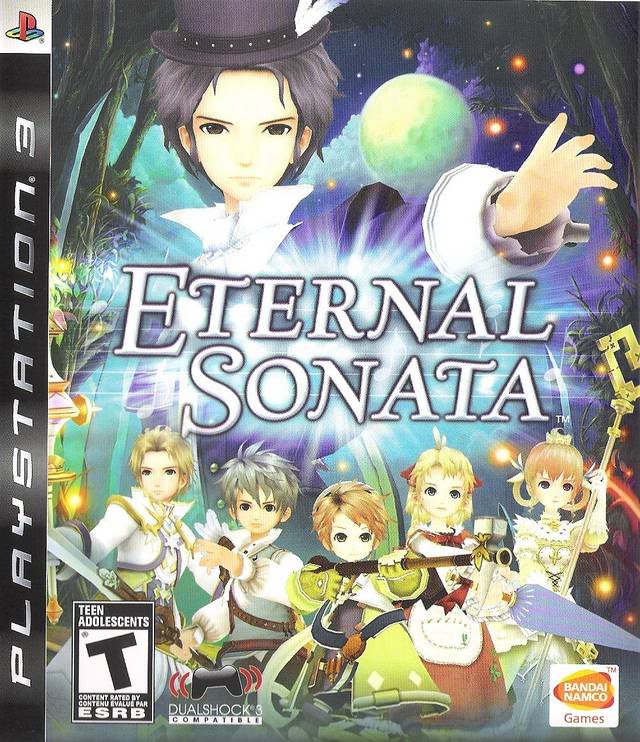This post has not been edited by the GamesBeat staff. Opinions by GamesBeat community writers do not necessarily reflect those of the staff.

Editor’s note: Interestingly enough, I would’ve quit Eternal
Sonata at the same place Alex did if I hadn’t been forced to review it — twice!
— for 1UP. And I agree with his assessment: RPG puzzles should challenge the
player — not annoy them. -Fitch
Many gamers think the PS3 lacks traditional Japanese RPGs. Partly true,
because Sony has a fair amount of high-quality RPGs made by the Japanese
(Demon’s Souls, Valkyria Chronicles, Folklore) — it’s just that those aren’t
really “traditional.” But fans who want “traditon” need to
broaden their horizons a bit, because as I recently found out…
…Tradition sucks.
Eternal Sonata was one of the few early well-received Xbox 360 Japanese
role-playing games. Even though it was overly cutesy and the voice acting was
on the short list of good reasons to tear off your own ears, the game seemed to
have a novel plot and an engaging battle system. Even better, the port to my
system of choice (PS3) kept the Japanese voice track intact, so I could actually
stand the cut-scenes when screechy-voiced Polka speaks.
So I purchased the game and gave it a couple solid play sessions. The
Japanese voice acting was actually pretty decent! I suppose good acting is just
good acting, no matter what language it’s in. The battle system reminded me of
the best parts of the Star Ocean series, except for a quirky item-management
system. But no big deal.
The graphics and artwork are nice, but then again, I’m a sucker for
cel-shading. The music’s a definite high point as well, especially the Frederic Chopin
tracks. The plot involves the aforementioned composer being transported
to a music-themed world on his deathbed, and…stuff happens. I don’t know exactly
what, though, because I’m about to explain why I stopped playing — despite the
intriguing plot!
Ahem…
F*** dungeons. At least, f*** overly large puzzle dungeons. You know what?
New rule: Games will no longer have big stupid puzzle dungeons with lots of annoying
enemies. Does anybody actually enjoy these anymore? Did anyone EVER enjoy them?
About 5 to 10 hours into the game, you cross a big ol’ bridge. At the other
end, your party enters an ancient fort, which is inexplicably made up of three
or so large rings, with two floors per ring. You can’t simply walk a straight
path to get from one end of the dungeon to the other. No! You have to hit
switches, which rotate the rings, and then run around trying to figure out how
the map’s changed while also getting attacked by rats and mage-like things. You
can’t easily figure out the correct path because of the dungeon’s sheer size,
so eventually fatigue led to frustration – which, oddly enough, led to me
feeling sleepy. So I quit.

Up until that point, I’d honestly enjoyed Eternal Sonata. But suddenly, the
developers decided I’d reached a good spot to put a time-consuming dungeon in
the game just to waste the player’s time. That was the last straw for me. These
kinds of RPGs need to break away from the archaic design decisions —
conventions that, in my opinion, are part of the reason Japanese games have
fallen behind their Western counterparts.
Don’t get me wrong; I’ve loved Japanese RPGs on every conceivable system for
years. The original Dragon Quest, Final Fantasy 5, Shadow Hearts — and the
list goes on. But Eternal Sonata was only released, like, two years ago! I
can’t put up with the lazy designs that permeate traditional RPGs — at least
not anymore. When I hit that stupid dungeon, I realized that I don’t want to
play that anymore. It’s a chore. It’s not worth my time, even if I may enjoy
the rest of the game. I’m done. I’m just sick of seeing that crap in my Japanese
role-playing games like it’s a genre requirement.
To the community: Have you played anything recently that just wasn’t worth
the effort? Or was everything acceptable except one aspect was past your point
of tolerance? Do you think I’m overreacting here?
